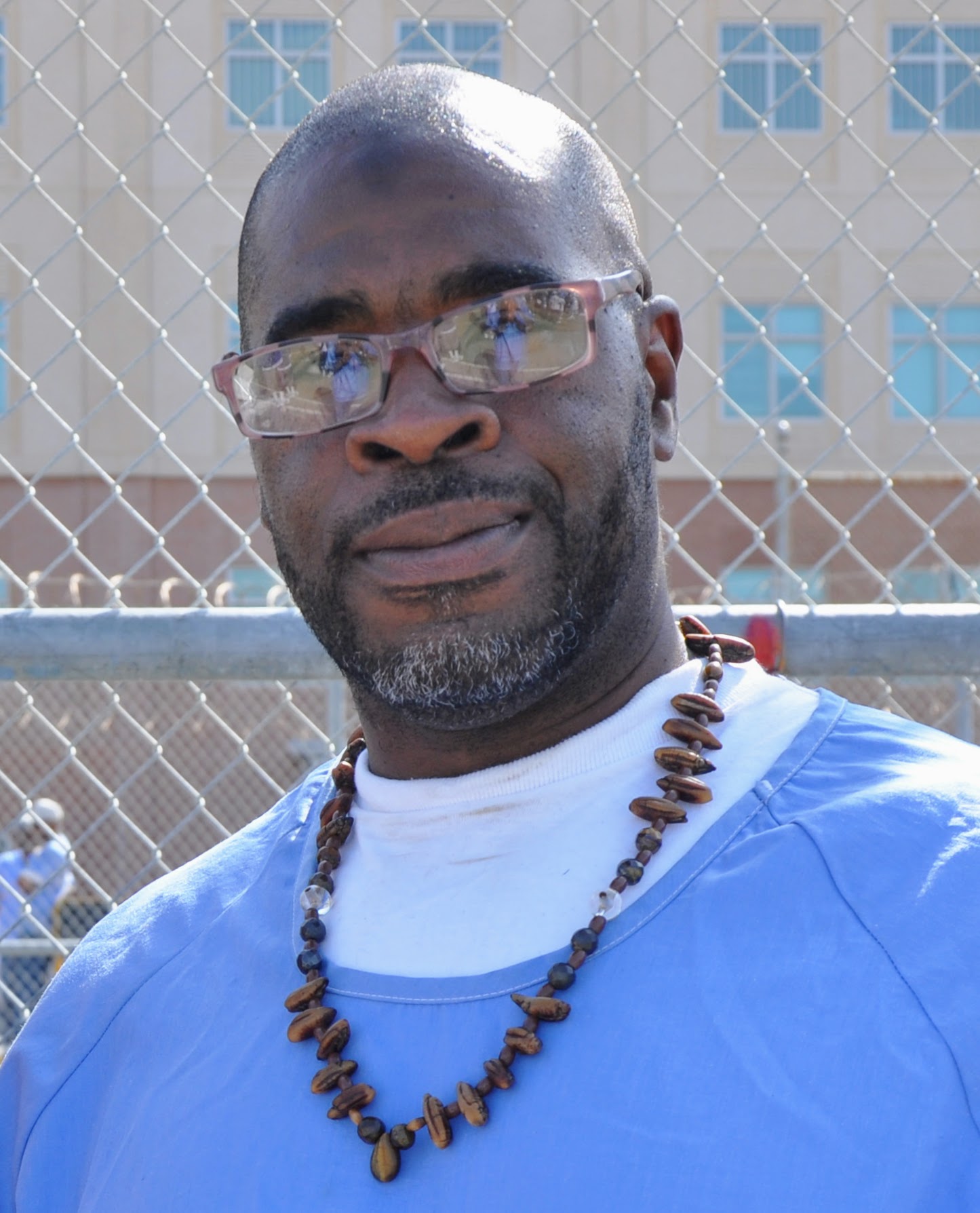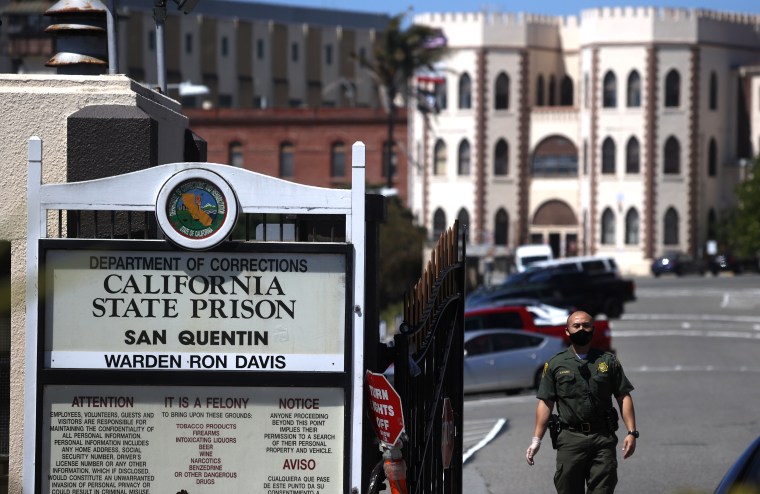When news of the global COVID-19 pandemic reached San Quentin prison, a state-run men’s prison in California, earlier this year, Marcus Henderson knew it was only a matter of time before the virus spread through the facility. It did, killing 28 inmates and at least one staff member and infecting Henderson and 2,200 other inmates at the outbreak’s peak, according to the California Department of Corrections and Rehabilitation (CDCR) and The Associated Press. In October, the AP reported that about three-quarters of the inmate population had been infected.
Henderson is the editor-in-chief of San Quentin News, a monthly newspaper run by 15 San Quentin prisoners and distributed to prisons and communities in California. (According to CDCR, Henderson has been imprisoned since 2001 and is eligible for parole in May 2022; CPJ emailed Finsbury, a public relations firm that represents San Quentin News on a pro-bono basis, about what Henderson was sentenced for; Finsbury managing director Jeremy Pelofsky said the firm would ask but did not respond by publication.)
Early on in the pandemic, the newspaper published just a few pieces – including one prescient story by an inmate who said that the virus would wreak disaster in San Quentin – before prison authorities shut down the paper along with other education programs because of the risk posed by people working side by side, reports said. After a six-month hiatus, the publication resumed printing in August, in part with the help of a grant from the Chan Zuckerberg Initiative.
COVID-19 continues to sweep through prisons with devastating force and speed. One in every five prisoners in the United States has had COVID-19, according to a December report in the criminal justice outlet The Marshall Project.
Henderson spoke to CPJ about how he runs the newspaper, his experience living through what the First District Court of Appeals in San Francisco called “the worst epidemiological disaster in California correctional history” in its October order to reduce the prison population, and his joy at being able to publish again. His answers have been lightly edited for length and clarity.

[Editor’s note: CPJ sent questions to Henderson through Finsbury. Henderson hand wrote his answers and returned them to Finsbury via the U.S. Postal Service. Finsbury associate Matt Vuono typed out the answers in a Word document and emailed them to CPJ. A photograph of the handwritten answers is included at the end of the interview. Finsbury also emailed Henderson’s answers to a public information officer at San Quentin prison, but did not receive a response.]
How long have you been the editor-in-chief of San Quentin News? How did you get involved in journalism?
I have been the editor-in-chief for a year and half, but I was the San Quentin (“SQ”) News Journalism Guild chairman for three and half years. [The guild is a training program separate from the editorial staff.] I got involved the first day I arrived at SQ. Rahsaan “New York” Thomas was SQ News sports editor at the time; he is currently one of the hosts of Ear Hustle, a podcast about incarceration inside San Quentin. He was my cellmate at a maximum-security prison and asked me to cover a baseball game, where the inside team was playing an outside team, something unheard of in prison. He told me to go interview the people and my mouth got dry and I realized then I hadn’t spoken to anybody besides incarcerated people and guards for more than 15 years. That was my introduction to becoming a reporter. After that, I joined the guild.
Prior to the COVID-19 outbreak, what did running and producing the paper look like?
Since we are a monthly, we would have all the scheduled events for the month (graduations, concerts or special celebrity visits) on our big white board and the staff would sign up to cover the event. If it’s a big event, we would assign two or three reporters, and one would be the lead writer. If someone did not sign up to cover an event, then we would assign it. Then the “fun” part – we would have our layout meeting every second week of the month. This is where the staff can argue for their stories to be first page, double truck [a type of double-page layout in a newspaper] or back page. The newspaper prime real estate. We have 15 staff members, so things can get interesting, but once the majority agree, that’s the story that gets the front page. The editor-in-chief will only change it if a bigger story comes in at the last minute. Staff would understand.
One unique thing for our newsroom is at least once a month we have an “air out” session. This is for all staff, no titles or positions. If you have an issue with something that is going on in the newsroom, that is the safe zone to say it. This was started by our beloved leader, former editor-in-chief Arnulfo Garcia [who died in a car accident two months after his release in 2017]. We all hated it at first, but Arnulfo was big on self-help groups and he wanted to make a space where we could be open. These sessions can be intense to loving depending on what’s going on, but we have our “check-ins” and “check-outs” to make sure everyone is OK, and we can move forward.
We interview people just like any reporter would, but as this is prison, we train our reporters not to approach someone’s family members without checking with that incarcerated person first. Most people are supportive, and they will say hey, they are with the news, talk to them. This removes any misunderstanding. As for photos, we have to work with the prison administration in advance, for their availability.
How did you cover the COVID-19 outbreak at first? How did interviews take place?
In the early days of COVID, we really had it contained, until the transfer happened of other prisoners [who were untested, from a men’s prison in Chino to San Quentin at the end of May, according to reports]. For most of us who have been here for years, we know that once something gets in here, it’s going to spread like wildfire. We have flu season every year and from that first cough you hear, you know it’s coming your way. From unit to unit, there is no avoiding it.
Early on there were a lot of rumors going around, you would hear so and so just died, then you try to pin down that source. Before you finish that investigation, you’d hear someone else had died. So, you try to get your credible sources, but movement is restricted. Sometimes you would hear that the same guy died twice, then you see him in the building, and you are like, “Man, they told me you were dead.” He would say, “I almost died; I was on a ventilator.” You know someone really died when the guards would come and get the remainder of their property.
This is where I think SQ News could have played a major part of getting the information out, about length of quarantine and possible treatment. We are in every state prison and some county jails. When people are just carried off without information, it’s scary and the next person is not so quick to say he is sick until it’s too late.
What did you see during the outbreak?
I wrote about what I saw, the alarms and things looking like a sci-fi movie that was real. When I tested negative for COVID-19 and my cellmate tested positive, I knew it was just a matter of time. So, no matter how much you wipe down, there was no way to social distance. He was right there. They did not have enough space to separate us to quarantine us, every place was full until they put the tents up. [Inmates were placed in triage tents to keep them at a safe distance from each other as the outbreak worsened inside the prison, reports said.]
So, I did get the coronavirus. I mostly lost my sense of smell; that was strange. I couldn’t smell anything; my cellmate had more symptoms like fever and sweating. We both had chest pains, like a chest cold that wasn’t breaking up. I was then moved to the tents pretty much after I got better, but the tents were great, we got to be outside.
We didn’t decide to stop publishing, that is just the nature of working in prison. Once everything shut down, we did not have access to the newsroom, all the education programs stopped, so we were like, OK, what’s next? We did not stop reporting; we just wrote for different outlets that we had built relationships with through the Society of Professional Journalists (SPJ). We are the only incarcerated chapter. I would have liked it to have come from San Quentin News, it would show people all the work we are doing versus what was happening at the moment.
[Editor’s note: CPJ emailed Lt. Sam Robinson, public information officer for San Quentin, for comment about the issues Henderson raised about the prison’s handling of the outbreak. Robinson responded in an email that “San Quentin State Prison immediately responded to a July outbreak of COVID-19 with a coordinated effort between local, state, and federal emergency response agencies, including setting up a 250-bed alternative care site on San Quentin grounds. A series of robust mitigation efforts were implemented to stop the spread of COVID-19, including providing and requiring the use of N95s by both staff and inmates, modifying operations by restricting all movement to emergency/essential moves only, and conducting mass testing of both staff and inmates regularly.”]
What’s the COVID-19 situation in San Quentin now?
There have been some precautions taken such as masks and the courts ordering some prison reduction. There are the tents for isolation, but we are still overcrowded, with a lot of elderly inmates and people with underlying conditions. We are just waiting for the next surge. The thing about prison is once something gets in, it’s in, you can try to manage it, but just spreads fast.
How does it feel to be able to publish the newspaper again?
It’s rewarding, we can focus on the things and information that we need to know and get that information to the incarcerated population. Sometimes we may be the only news people get while they are in solitary confinement, like in the Security Housing Unit (SHU) or Administration Segregation (Ad-Seg), which keeps them informed on what’s happening in general population and what’s going on with criminal and social justice around the nation and sometimes around the world. I think it helps with their mental health, that they don’t feel completely closed-off.
The main thing I like about publishing again is, just like other news agencies, we had to find new ways to work. We strengthened ties with former staff who are now home. We were able to start a fellowship program to help with their reentry and helped us relaunch the paper. The transition was easy because they already know the job positions, and the rules and procedures of the prison. The hardest thing was creating a system between them and us inside. It’s still a work in process, but we are getting the paper out. I think this time it’s really hard on our advisors and volunteers, because they can’t come in and they are worried about how we are doing.
Our paper promotes self-help, rehabilitation, and education. We don’t put this paper out to harm or offend anyone. We let incarcerated people, their families, and officials (prison or elected) know what is possible with change. We make change cool, which makes society safer. Journalism is about keeping the community informed and I think we need to hear more positivity in the world.

